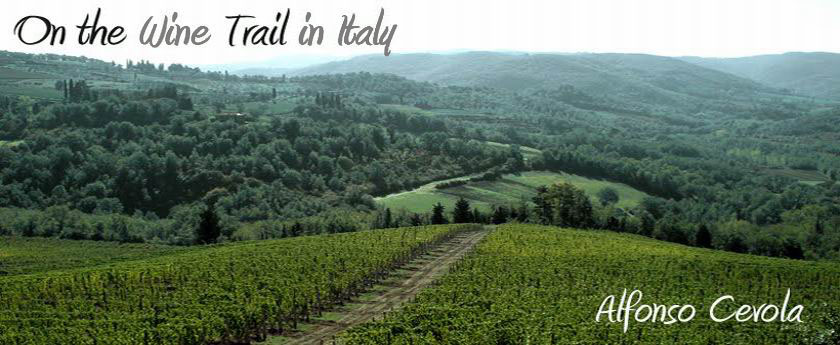 Dorothy Gaiter and John Brecher of the Wall Street Journal, recently described the 2001 Podere Salicutti Piaggione Brunello as “Rough and brawny. Makes you feel alive, like it's really close to the earth. Rustic, primitive lustiness.” I think they liked it.
Dorothy Gaiter and John Brecher of the Wall Street Journal, recently described the 2001 Podere Salicutti Piaggione Brunello as “Rough and brawny. Makes you feel alive, like it's really close to the earth. Rustic, primitive lustiness.” I think they liked it.In the past, when I heard the word “rustic” to describe an Italian wine, it made me cringe. Was a Francophile trying to appease me with his home boy description of a wine that was near and dear to me? Or was it a back-handed complement?
Now that we have discovered terroir, I guess they like it, they really like it. In the case of the couple from the WSJ I don’t doubt it for a minute. Rusticity implies a connection with the land, an observation of the territoriality of the vine.
 Back in the 1970’s the young hippies new all about terroir. Why was Panama Red or Acapulco Gold in such demand then? Or White Widow or Northern Lights in these times?
Back in the 1970’s the young hippies new all about terroir. Why was Panama Red or Acapulco Gold in such demand then? Or White Widow or Northern Lights in these times?Interesting to note that in the 1960’s the herb of the counterculture had about 1% THC content. In the 1970’s it rose to about 4%. Now it can be found with up to 15% potency. I'm using this example simply to parallel the goings on here in America,not as a proponent of it's use. However, it is very similar to the acceleration of the amount of French oak we are seeing in the big fruit bombs that define the International Style in the wine world, along with every increasing alcohol content.
Maybe the American palate requires more and more firepower to get it aroused. Try finding a wine at 12% alcohol these days, it’s very difficult to locate.
 We in America have pretty much run aground in our pursuit of a bigger, more powerful, more oak, more alcohol, more extraction, higher score, more gold medal madness. In Italy it is much easier to understand the marriage of terroir with technology. What do you think a Ferrari is? Could it have come out of Detroit instead on Modena? I couldn’t imagine it. But somehow, among the balsamic and the lambrusco, the mortadella and the zampone, there arose from the land an automobile that expresses the terroir of the region as well as any of the wines and foods.
We in America have pretty much run aground in our pursuit of a bigger, more powerful, more oak, more alcohol, more extraction, higher score, more gold medal madness. In Italy it is much easier to understand the marriage of terroir with technology. What do you think a Ferrari is? Could it have come out of Detroit instead on Modena? I couldn’t imagine it. But somehow, among the balsamic and the lambrusco, the mortadella and the zampone, there arose from the land an automobile that expresses the terroir of the region as well as any of the wines and foods.So what’s the hubbub all about?
 Right now in Piedmont, in Barbaresco a light snow covers the vineyards in the twilight. Underneath the fog and the ice the raw ingredients for the 2007 models are being forged. A little oak might find its way into the flavor, maybe even a little malo-lactic acid. Will that make it a better wine, a wine able to express the nature of the land and the people making it? For some, yes.
Right now in Piedmont, in Barbaresco a light snow covers the vineyards in the twilight. Underneath the fog and the ice the raw ingredients for the 2007 models are being forged. A little oak might find its way into the flavor, maybe even a little malo-lactic acid. Will that make it a better wine, a wine able to express the nature of the land and the people making it? For some, yes.It has gotten me thinking about what really is in a wine that is truly indigenous. Bucky Fuller told me once, “Anything that Nature lets you do is natural.” Hmm…
My friend, Andrea Fassone, wrote me today, about Barbaresco. He said, “...Barbaresco. Isn’t beautiful?
How come people are so unaware about it? ” I don’t know, friend, but maybe if we keep talking about it for another 25 years, some of them will come around.
For those people who come up to me and say, “I had this wine in Rome and it was so wonderful. Why can’t they bring these wines to America?” I have this to tell them: I have this wine from Barbaresco and it is also wonderful. And chances are you haven’t been to the town and chances are very few of you ever will. But the wine that comes from this sleepy little village tastes of a time and a place that is unique to that very place. So, take the leap to rustic, primitive lustiness. It might make you, too, feel alive.



